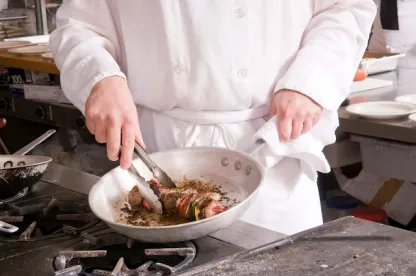Jamie Oliver’s two flagship restaurants have hit the headlines this week, with the upmarket steak restaurant Barbecoa in London’s Piccadilly closing. This comes shortly after last month’s announcement that Jamie’s Italian was closing 12 of its 37 restaurants, following the 6 sites that closed in January 2017.
The Guardian reported that the number of UK restaurants “going under” jumped by a fifth in 2017 and it appears that 2018’s tough market will be just as relentless.
Jamie’s Italian has been reported as attributing the closures to a ‘tough market’ and that ‘post-Brexit, the pressures and unknowns have made it even harder’. With a large amount of ingredients being imported from the EU and the weak pound it is hardly surprising that the restaurant industry is suffering.
A number of other casual dining companies such as Prezzo and The Restaurant Group announced site closures in 2017, citing similar woes of the tough trading conditions, increased labour costs and food inflation. Gourmet burger chain Byron are also having a troubled start to the year, and have announced a rescue plan with lenders and landlords which could lead to the closure of up to 20 restaurants. Burger competitor, Handmade Burger Co, went into administration last year, with the administrators being advised by Squire Patton Boggs’ Birmingham office, and chain Square Pie succumbed to administration earlier this month, further highlighting the problems facing the casual dining sector.
So what exactly is eating up the restaurant trade? In Deloitte’s recent report ‘The UK Casual Dining Market’ it is clear that this sector is going through a ‘challenging period faced with margin pressures mounting as a result of higher labour costs, higher business rates and increased food costs’. This coupled with consumers being squeezed on tight disposable incomes is a perfect storm for some restaurateurs. Deloitte also reports that consumer confidence is falling and consumer trends are changing from the traditional dining out experience. In a world with services such as ‘Deliveroo’ and ‘Just Eat’ never more than a click away it seems tasty cuisine is more available than it has ever been without having to step outside the comforts of your own home. Deloitte identifies that the home delivery market is growing ten times faster than the eating out market which could be worrying for the restaurateur that has not embraced the digital home casual dining trend.
As consumers in a digital age where everything is at our fingertips it seems we expect more and more from our restaurant experience to lure us to tread those restaurant boards. In a competitive, saturated and uncertain market, where margins are being stretched from every angle, it seems that it may be the last supper for some.





 />i
/>i
